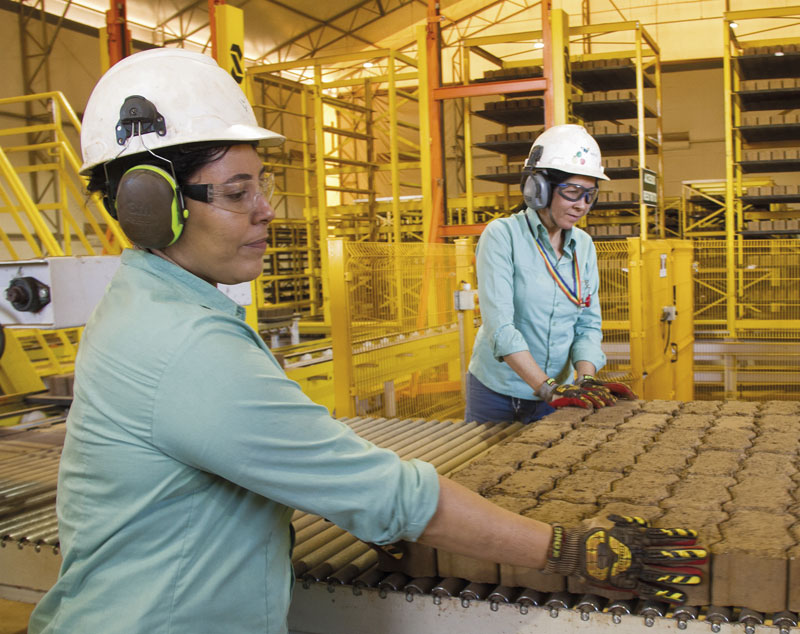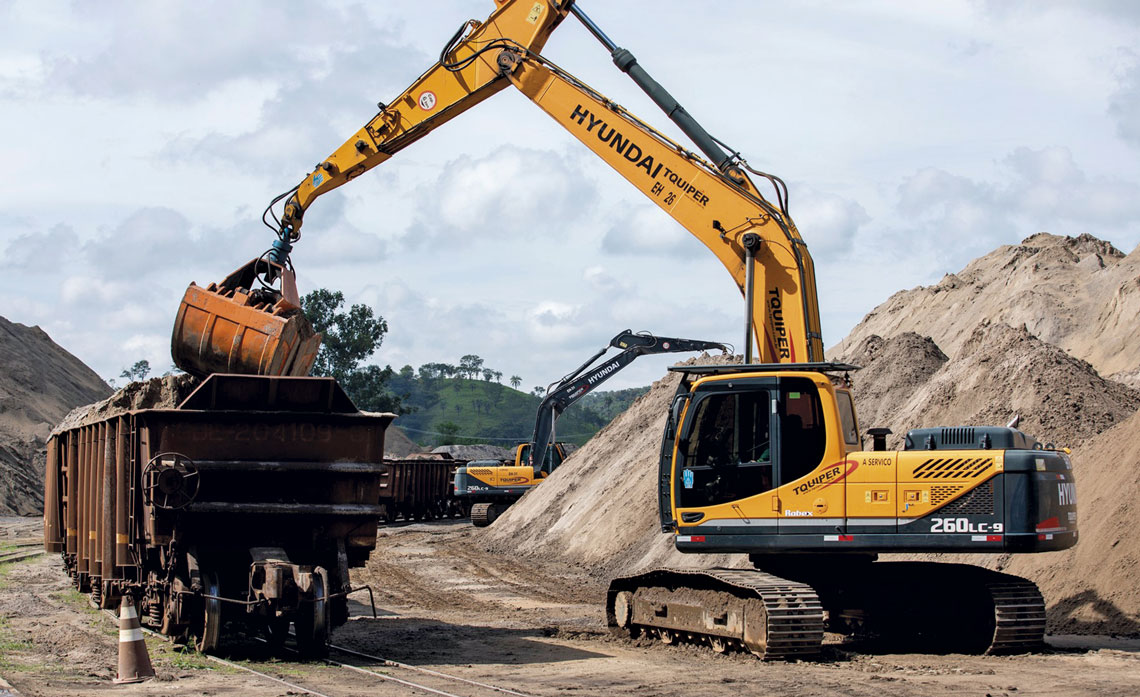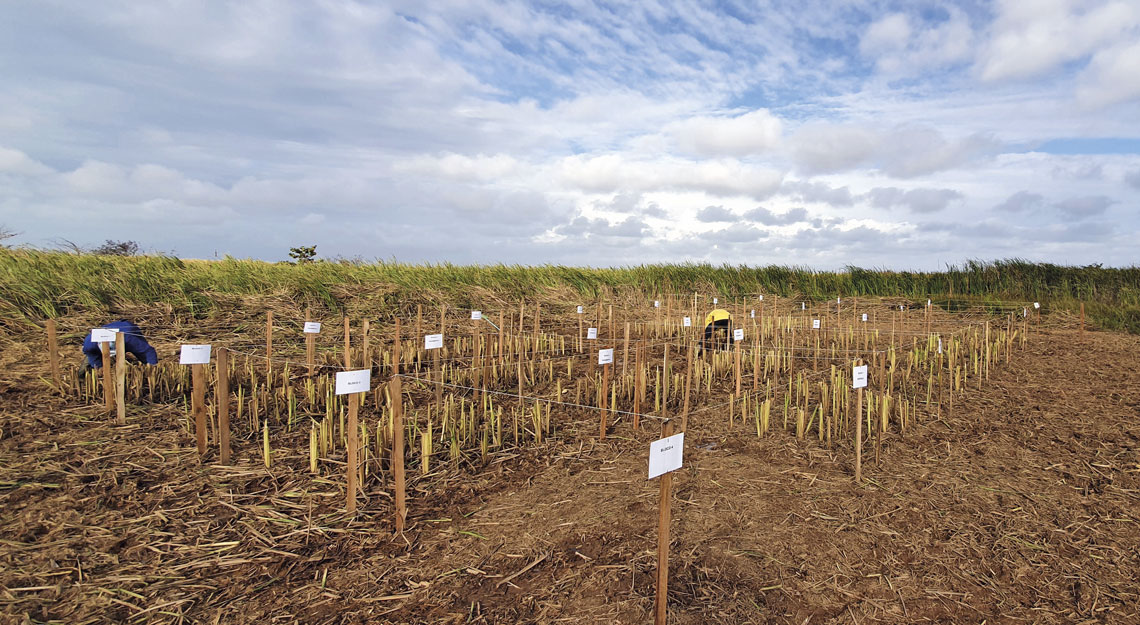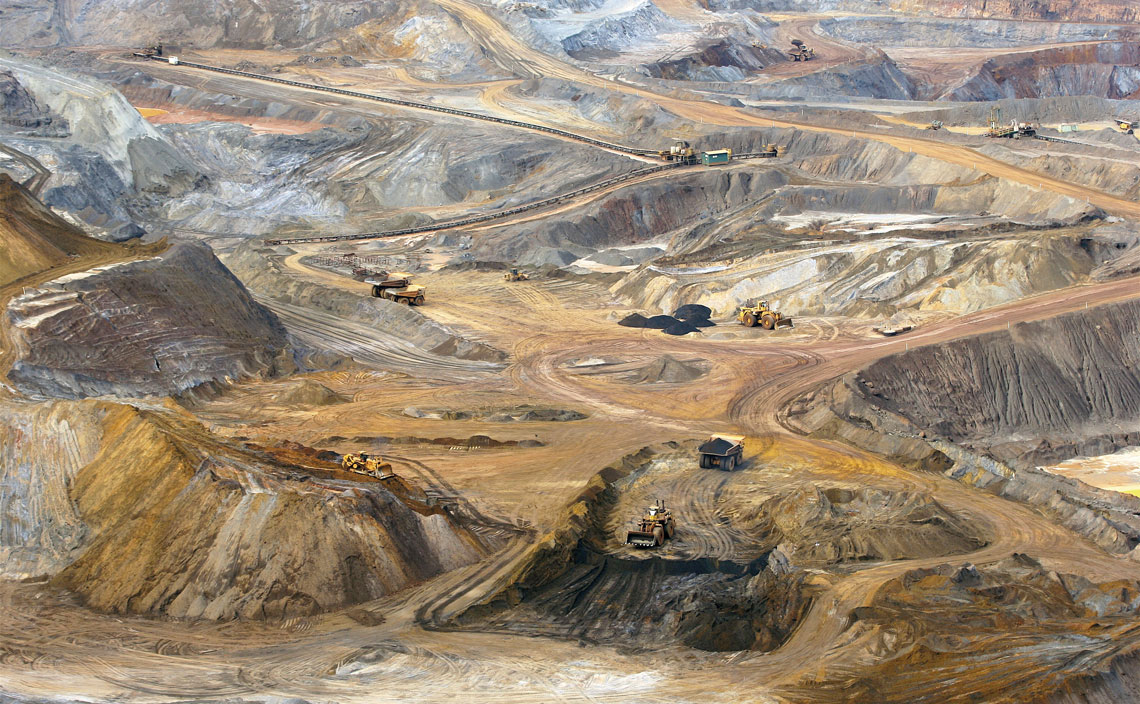Two monumental mining waste spills in the state of Minas Gerais — one spanning 34 million cubic meters (m³) from a Samarco dam in Mariana, in 2015, and another by Vale, in Brumadinho, that covered 12 million m³ in 2019 — have forced mining companies and motivated startups and universities to accelerate the search for new uses and destinations for tailings, especially from iron ore extraction. Years later, results, still tentative, have started to appear in the form of tiles, bricks, paving, plastic wood, and fertilizers for agriculture produced from mining waste.
The search for alternatives was driven by approval of federal law no. 14.066, in 2020, which prohibits the installation of upstream tailings dams, such as those which collapsed in Mariana and Brumadinho. Constructed with containment dikes supported by overlapping layers of waste, this type of dam is simpler and cheaper, but also more vulnerable to ruptures.
For production engineer Bruno Milanez, of the Federal University of Juiz de Fora (UFJF), one possibility is to use this material to cover the cavities formed by mining, known as backfilling. “It is a more sophisticated and more expensive method than tailings containment dams, but offers greater security and increases the possibility of recovering the exploited area,” he says.
The technique has been in use since the end of the 1990s in the exploration of silver, lead, iron, coal, gold, zinc, and copper in countries such as Australia, China, the USA, and Canada. Its great advantage is providing more stability to underground mines. The disadvantage is that, if not done well, it can contaminate groundwater reservoirs. It also needs to be well planned in order to not delay the mining activity.
Another method already in use is the dry stacking of tailings, after the removal of moisture. Before using it, the mining company must produce a technical design that considers the topography of the land, the storage capacity, and environmental safety. Although it is safer than tailings dams, explains Milanez, the technique is not devoid of risk. “In January 2022, a pile of this type belonging to mining company Vallourec collapsed into a nearby water containment dike. The water overflowed and invaded highway BR-040, which links Minas Gerais to Rio de Janeiro, causing its closure for two days,” the specialist recalls.

Beto RochaVale’s block factory, which uses sand generated from the extraction process as a raw materialBeto Rocha
40% of production
Brazil is the second-largest global supplier of iron ore, with an annual gross production of almost 600 million tons (t), of which 430 million t were beneficiated, according to the 2022 Anuário Mineral Brasileiro (Brazilian mineral yearbook). Beneficiation is the stage of removing impurities and concentrating the iron content in the ore.
Of the total weight of beneficiated ore, the tailings — essentially sand, and iron oxides and hydroxides not retained in this stage — can represent a variable proportion of up to 40%, in accordance with the quality of the raw material and the efficiency of the beneficiation process. Brazil generates between 86 million and 172 million t of tailings from iron production each year.
Vale, the largest mining company in Brazil, was responsible for producing 321.2 million t of iron ore in 2023, with the volume of tailings reaching 48.6 million t, equivalent to 15% of the total. “Since 2014, we have invested in research in Brazil to find solutions for reusing the sand from iron ore processing with the aim of reducing the generation of tailings,” informs Tatiana Teixeira, New Business manager at the company.
In 2020, the mining company opened a block factory that uses sand generated in the extraction process as a raw material. “Since 2021, approximately 1.9 billion tons of the product have been used in construction and highway paving projects,” says Teixeira. Last year, Vale created a company, named Agera, to sell and distribute the sand, which the company refers to as sustainable.
The mining company has invested US$24 million in the last 10 years into the research and development of solutions for reusing iron ore tailings. Between 2019 and 2021, it allocated US$1.2 billion to filtering systems and dry stacking. In 2023, the company’s net revenues totaled US$41.78 billion.

Fernando Piancastelli / Agera Loading sand recovered from tailings in the Agera distribution centerFernando Piancastelli / Agera
Samarco generated approximately 20 million t of tailings last year. According to Samarco innovation expert Marcos Gomes Vieira, since December 2020 the company has invested in technologies for safer and less environmentally damaging mining. “We have filtering systems that enable dry stacking of up to 80% of the tailings,” he states. The mining company has also developed projects for the near future, including one which seeks to use a portion of the sandy tailings as an input for manufacturing concrete.
New technologies on the market
Despite the possibilities of reuse, in Brazil, like in other countries, only a tiny portion of tailings is actually being transformed into a product. “Based on research done in recent years, we have tried to take new technologies [that use mining waste] to the market,” says chemist Rochel Montero Lago, of the Federal University of Minas Gerais (UFMG) and coordinator of the National Institute of Science and Technology (INCT) for the Valuation of Waste and Renewable Materials (MIDAS), created in 2017.
The following year, aiming to connect academic knowledge to companies, UFMG and the Innovation and Technology Center of the National Service for Industrial Training (SENAI) in Belo Horizonte created the Center for Technology Scaling and Business Modeling (ESCALAB), also coordinated by Lago, with financial backing from INCT MIDAS.
One of the initiatives in this area is conducted by Geeco Materiais e Engenharia, a company from Minas Gerais, created in 2019. “We had support from the universities and several professors during the development process, says chemist Caroline Prates, current director of technology for the enterprise.
Geeco’s project — the experimental production and installation of blocks and coverings made with tailings — was one of the highlights of the e-book Práticas em circularidade no setor mineral (Practices in circularity in the mineral sector), a collection of projects funded by mining companies published by the Brazilian Mining Institute (IBRAM), in 2022. In this same year, the startup was selected to participate in Mining Hub, an open innovation program created by IBRAM and by the mining companies in 2019, which brings together large companies from the sector, supply companies, and startups.
Based in Pedro Leopoldo (Minas Gerais), Geeco develops projects with mining and construction companies to reuse waste, transforming it into materials called geopolymers. One of their uses is replacing up to 100% of ordinary Portland cement, with lower carbon dioxide emissions compared to traditional cement.

Esalq-USPExperimental southern cattail plantation for decontamination of the soil near the mouth of the Rio Doce (Espírito Santo)Esalq-USP
At the Luiz de Queiroz College of Agriculture of the University of São Paulo (ESALQ-USP), the team led by agricultural engineer Tiago Osório Ferreira researches potential uses for tailings in agriculture. One of its projects assesses the use of waste from iron mining as a raw material for producing soil conditioners, also known as soil amendments. Unlike correctives, conditioners do not only aim to supply nutrients, but to improve the capacity of the soil to retain water, organic material, and nutrients, facilitating plant growth.
When contaminated, tailings can be an environmental risk. In search of ways to remedy the contamination of the Rio Doce resulting from the release of tailings after the Fundão dam breach, belonging to Samarco, one member of the ESALQ group, agricultural engineer Amanda Duim Ferreira, in her PhD research completed in 2024, verified that the plant southern cattail (Typha domingensis) colonized part of the region and has potential for decontaminating the soil, as detailed in articles published in the Journal of Hazardous Materials in April 2022 and in the Journal of Cleaner Production, in September 2022. Based on the results, the ESALQ group cultivated the southern cattail on mining waste and verified an increase in the removal of iron.
With a law degree, Ottavio Carmignano, a partner at mining company Pedras Congonhas, from Nova Lima in the Metropolitan Region of Belo Horizonte, has found 95 patents related to the reuse of iron ore tailings filed in Brazil and in countries with a tradition of mining, as detailed in an October 2021 article in the Journal of the Brazilian Chemical Society. “The majority of the projects are in the preliminary phase, on a laboratory scale,” he observes. One of the bottlenecks, Carmignano recalls, is logistics: the distance between the mines and the consumer markets may make the products made from tailings more expensive.
Another is the price. “Plastic wood made with tailings from dams, which I studied in my PhD on technological innovation, can last up to 100 times longer than regular wood. However, because it is 10 times more expensive, due to the production process, it is not accepted by the market, because it is always looking for the lowest price.”
Milanez, of UFJF, recognizes the importance of initiatives that seek to transform tailings into products. The engineer thinks that, since the new products will not be sufficient to absorb the huge quantity of waste produced and already stored in dams, it is also necessary to produce less waste and make the material that will not be transformed into other products safer.
Projects
1. Iron ore tailings for the preparation of soil amendments and smart-C soils: Smart agriculture in the fight against climate change and soil degradation (nº 23/02429-6); Grant Mechanism Program for Research on Global Climate Change; Principal Investigator Tiago Osório Ferreira (USP); Investment R$472,168.02.
2. Estuarine plants and their influence on the biogeochemistry of metals in soils impacted by the Mariana disaster” (nº 19/14800-5); Grant Mechanism Doctoral Fellowship; Supervisor Tiago Osório Ferreira (USP); Beneficiary Amanda Duim Ferreira; Investment R$342,424.08.
3. The Mariana disaster: Contamination diagnosis, remediation strategies, and reuse of iron ore tailings (nº 22/12966-6); Grant Mechanism Regular Research Grant; Principal Investigator Tiago Osório Ferreira (USP); Investment R$256,154.71.
Scientific articles
CARMIGNANO, O. R. et al. Iron ore tailings: Characterization and applications. Journal of the Brazilian Chemical Society. Vol. 32, no. 10. Oct. 2021.
FERREIRA, A. D. et al. Iron hazard in an impacted estuary: Contrasting controls of plants and implications to phytoremediation. Journal of Hazardous Materials. Vol. 428, 128216. Apr. 15, 2022.
FERREIRA, A. D. et al. Screening for natural manganese scavengers: Divergent phytoremediation potentials of wetland plants. Journal of Cleaner Production. Vol. 365, 132811. Sept. 10, 2022.
Books
MEDEIROS, K. A. (ed.). Anuário Mineral Brasileiro: principais substâncias metálicas. Brasília: ANM, 2023.
RODRIGUES, C. de P. et al. (eds.). Práticas em circularidade no setor mineral. Brasília: Ibram, 2022.
